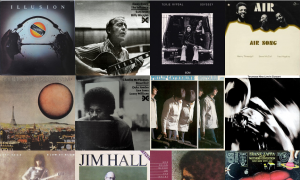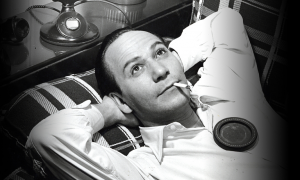As a child of the '70s,
Neil Young's music was some of the first I heard played on the radio.
Heart of Gold must have been piped into every café, truck stop, and grocery store in Central Virginia, where I spent my formative years. And if you were taking a road trip, scanning the stations meant you could easily hear it multiple times in one afternoon. Astonishingly, it remains his
only number #1 hit to this day. Out of such a profound body of work, how can that be? Take a closer look, and you'll find your answer:
Neil Young is eclectic and undefinable. He doesn't get comfortable. He shuns the popular vote. He is constantly in motion, driven to create new art and experiences, all the while speaking his mind through his music. Sometimes it seems like he's making it all up as he goes along, and that there is no grand plan, no vision. Yet, somehow there's always a thoughtful narrative and a conscious architecture in place. Sound relatable? These are also some of the same basic precepts we have for jazz.
Genres notwithstanding, Neil Young is considered to be one of the most influential musicians of his generation. Period. His songs have been covered by a who's who of musicians over the years from
Bob Dylan, to Pearl Jam, from
Cassandra Wilson to
Norah Jones. Only a handful of artists of his stature can claim such a successful career that spans 50+ years, with no signs of stopping. The following is a list of my personal selections for his top ten recorded tracks, to date (and an acknowledgment of some outstanding covers).
Songs 1-3: The Love Songs
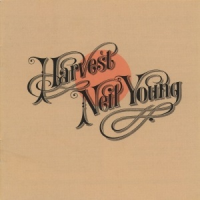
"Heart of Gold" from Harvest (1972 / 2009 Remaster) | 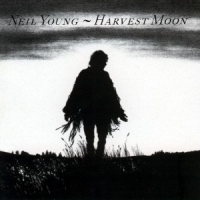
"Harvest Moon" from Harvest Moon (1972) | 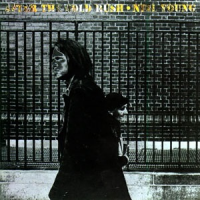
"Only Love Can Break Your Heart" from After the Gold Rush (1970 / 2009 Remaster) |
Simple, strong, and ubiquitous,
Heart of Gold was the number #1 hit in the US and Canada in 1972, and, more recently, named the third greatest Canadian song of all time by CBC Radio (2005). It's been said Young resented the mainstream status it afforded him, saying: "This song put me in the middle of the road. Traveling there soon became a bore so I headed for the ditch. A rougher ride but I saw more interesting people there." Like
Heart of Gold, Young's open love letter to Pegi Young,
Harvest Moon, continues to grow in popularity. Widely considered one of the greatest love songs of all time, it peaked at #36 on the UK charts upon release in 1992 yet, in 2017, the namesake album climbed to #7 on Billboard's vinyl chart.
Only Love Can Break Your Heart completes this trifecta of Young's more romantic compositions. It was purportedly written for band mate Graham Nash after the break-up with Joni Mitchell, though Young has neither confirmed nor denied this in later interviews. It was released as a single in 1970, becoming the first top 40 hit for Young, peaking at # 33 on the US charts. It's worth noting that Linda Ronstadt and James Taylor sang back-up vocals for these three songs plus several others from that period in Young's career. Not only does this trio represent some of Young's most romantic work, they are also some of his most iconic. For me, without these three songs, there would be no Neil Young (as we know him today).
Songs 4-6: The Allegories
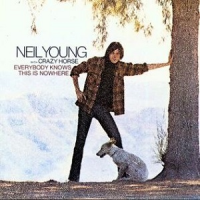
"Down By the River" from Everybody Knows This is Nowhere (1969) | 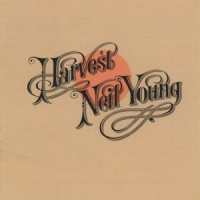
"The Needle and the Damage Done" from Harvest (1972 / 2009 Remaster) | 
"Old Man" from Harvest (1972 / 2009 Remaster) |
If anyone can tell a story, it's Neil Young. Sometimes his stories are based in truth, like
Old Man, which is said to be written about the caretaker of Broken Arrow Ranch, which he purchased in 1970. Others, for example,
The Needle and the Damage Done, could be considered a prelude, or foreshadowing of events to come, like the death of band mate Danny Whitten to a heroin overdose. Still others, like
Down By the River, have a mythology all their own. Legend has it that Young composed it while ill with a 103-degree fever. If this is true, perhaps it contributed to the poetry of the song, enticing the imagination of his audience who know by now to listen carefully, yet not take his lyrics at face value.
Songs 7-10: The Protests
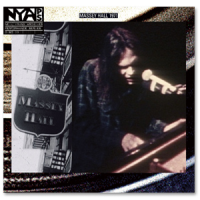
"Ohio" from Live at Massey Hall (Originally released as a Single June 1970) | 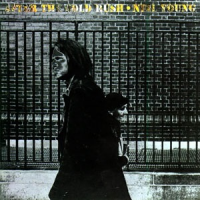
"Southern Man" from After the Gold Rush (1970/ 2009 Remaster) | 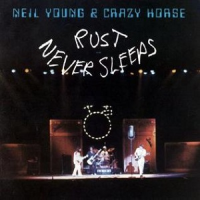
"Hey, Hey, My, My" or "My, My, Hey, Hey (Out of the Blue)" Rust Never Sleeps (2009 Remaster) | 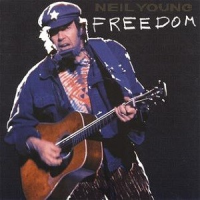
"Rockin' in the Free World" from Freedom (1989) |
No stranger to controversy, Neil Young is known for confronting it head-on—through his songwriting, his personal political activism, and his unwavering obstinance. Deeply disturbed by the "Kent State Massacre" May 4, 1970, and the chilling photos of the aftermath in
LIFE magazine, Young entered the studio two weeks later, and emerged with the single
Ohio, one of the most gripping protest songs of all time. Just three months later,
Southern Man would be released on the album
After the Gold Rush—another compelling statement, this time about racism in the Southern US, completing a metaphorical "one-two punch" of protest songs. Not too long after in 1979, Young would turn the lens closer to home, with his song
Hey, Hey, My, My and its response
My, My, Hey, Hey. This two-part refrain took a critical look at the current state of rock music, acknowledging the rise of punk rock and, some say, Young's self-perceived irrelevance at the time. However, with the legendary phrase "It's better to burn out, than fade away," and its connotation in the death of Kurt Cobain, this song confirmed Young's standing as one of the most relevant voices in Rock 'n Roll of all time. Years later, during a peak of global political dissonance, Young would go on to take aim at the Establishment with his no-holds-barred
Rockin' in the Free World. Released just prior to fall of the Berlin Wall in 1989, it became an unofficial anthem for that historic event, and is ranked #216 in
Rolling Stone magazine's 500 Greatest Songs of All Time. Like
Hey, Hey, My, My, two versions of the song were released: one acoustic, one electric. It's the electric version that appears in this Playlist (below).
Bonus Tracks: The Covers
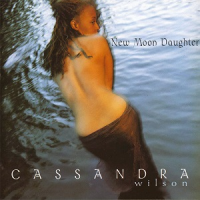
"Harvest Moon" by Cassandra Wilson from New Moon Daughter (1995) | 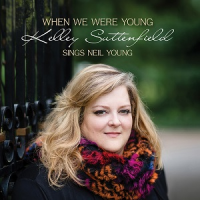
"Harvest Moon" by Kelley Suttenfield from When We Were Young: Kelley Suttenfield Sings Neil Young (2019) |
And finally here we have the throughline—a definitive connecting point of Young's body of work to the jazz milieu.
Cassandra Wilson's performance of
Harvest Moon on her 1995 album
New Moon Daughter essentially rebooted my concept of jazz and what it could sound like. By then, I'd been to see Neil Young in concert. I'd heard him perform
Harvest Moon live, and I loved every note of it. Yet, Cassandra's version was moody and spellbinding (and still is), and it inspired me years later to create my own versions. In the interim, there have been quite a few notable interpretations of Neil Young's songs in the jazz vocal canon:
Old Man sung by
Lizz Wright,
Only Love Can Break Your Heart sung by
Jacqui Naylor, and
Heart of Gold sung by
Laila Biali & Adam Robert Thomas come to mind.
These are songs from my personal history, and perhaps yours as well. To a seasoned listener, they are like auditory time capsules, each one an indelible life stamp. To an inquisitive performer, they inspire additional exploration and, in some cases, additional recordings. Full disclosure: I've recently released my own jazz-pop album dedicated to the music of Neil Young. If I had to characterize it how would I describe it? Interestingly enough, I might sum it up in three words:
eclectic and undefinable.
Cover photo by: Tobias Akerboom "Neil Young at Posbop" (2008), presented under the Creative Commons Attribution 2.0 Generic license.













 All About Jazz has been a pillar of jazz since 1995, championing it as an art form and, more importantly, supporting the musicians who make it. Our enduring commitment has made "AAJ" one of the most culturally important websites of its kind, read by hundreds of thousands of fans, musicians and industry figures every month.
All About Jazz has been a pillar of jazz since 1995, championing it as an art form and, more importantly, supporting the musicians who make it. Our enduring commitment has made "AAJ" one of the most culturally important websites of its kind, read by hundreds of thousands of fans, musicians and industry figures every month.










